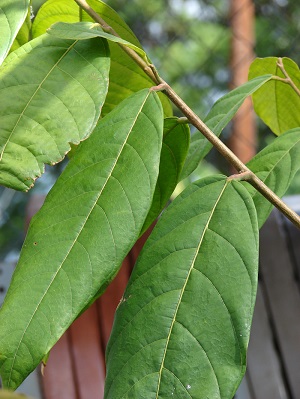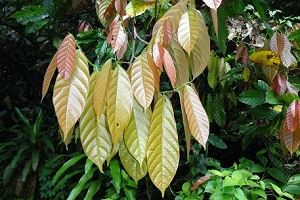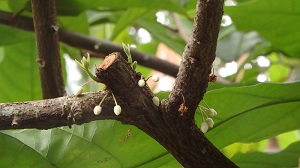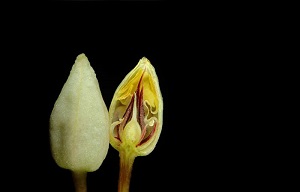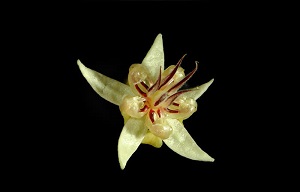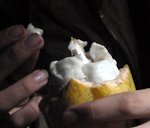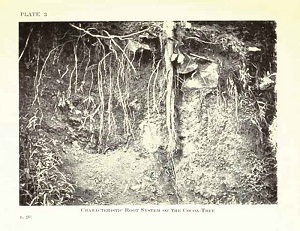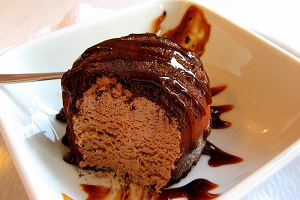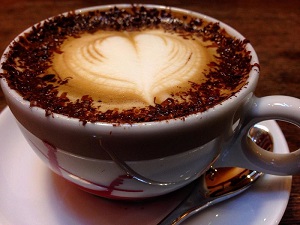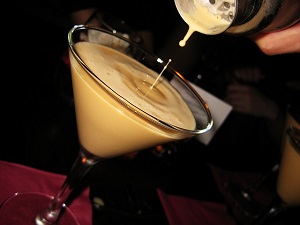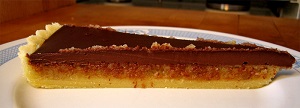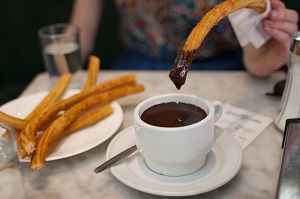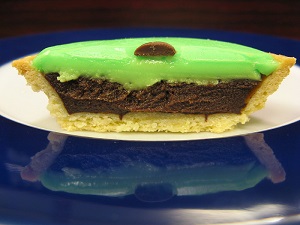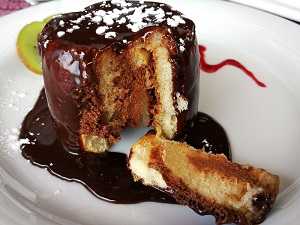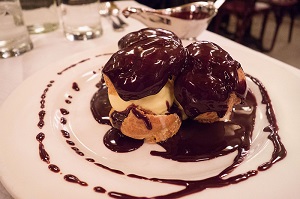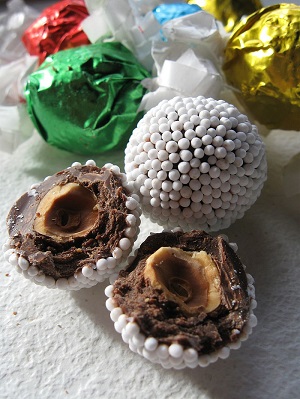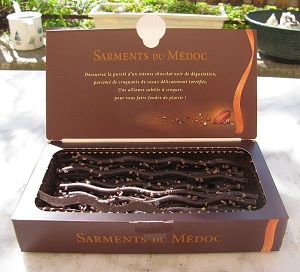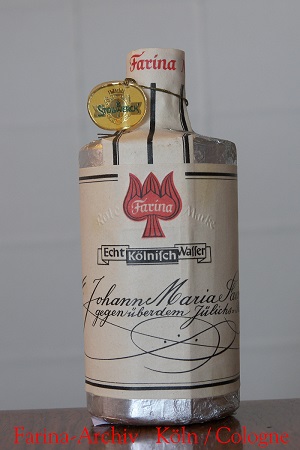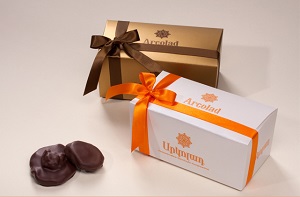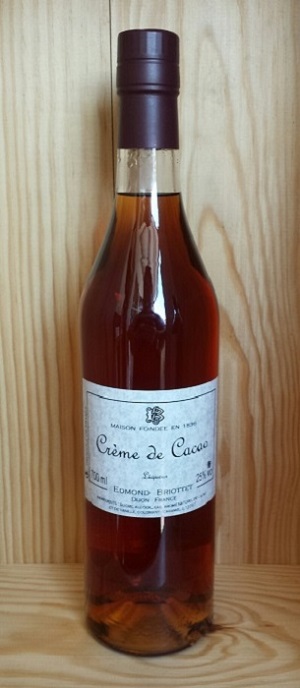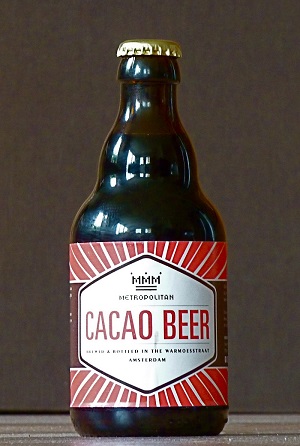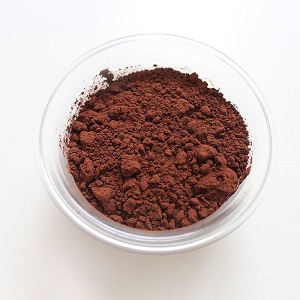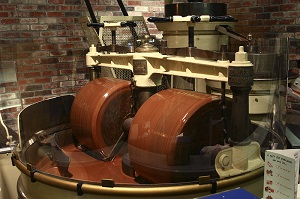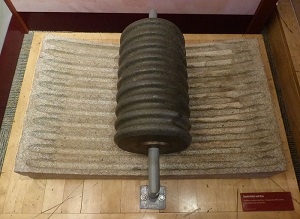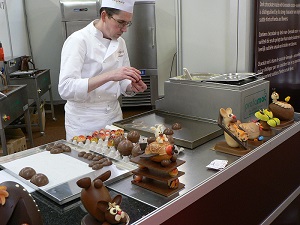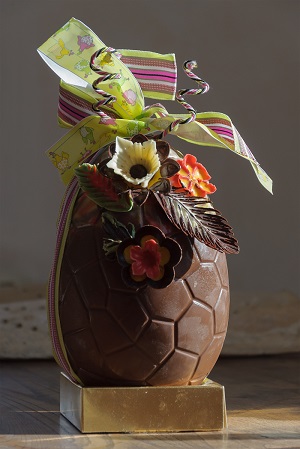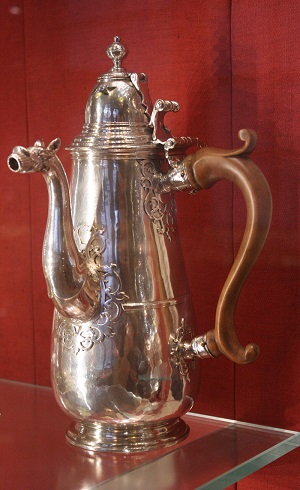| Cacao, Chocolate Tree - Theobroma cacao | ||||||||||||||||||||||||||||||||||||||||||||||||||||||||||||||||||||||||||||||||
|---|---|---|---|---|---|---|---|---|---|---|---|---|---|---|---|---|---|---|---|---|---|---|---|---|---|---|---|---|---|---|---|---|---|---|---|---|---|---|---|---|---|---|---|---|---|---|---|---|---|---|---|---|---|---|---|---|---|---|---|---|---|---|---|---|---|---|---|---|---|---|---|---|---|---|---|---|---|---|---|---|
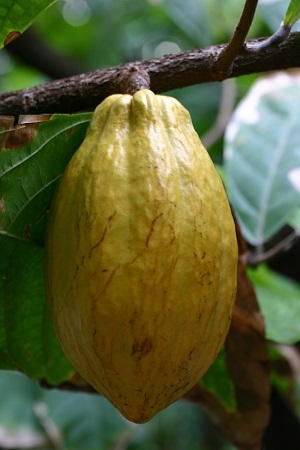 Fig. 1 Theobroma cacao subsp. cacao 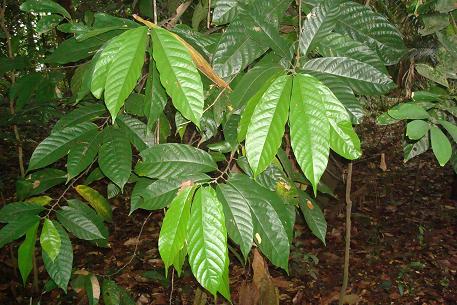 Fig. 2 Cacao leaves 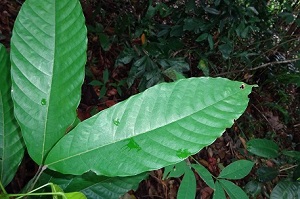 Fig. 3  Close up of leaf 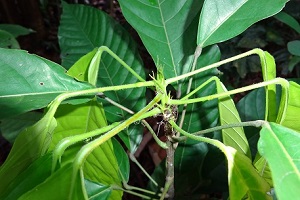 Fig. 4  Plant new growth  Fig. 8  Flower growth habit 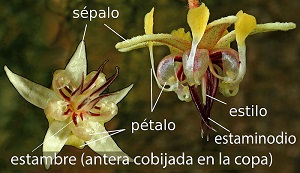 Fig. 9  Sepalo (sepal), estilo (style), estambre (stamen), antera cobijada en la copa (anther nestled in the petal), petalo (petal)  Fig. 10  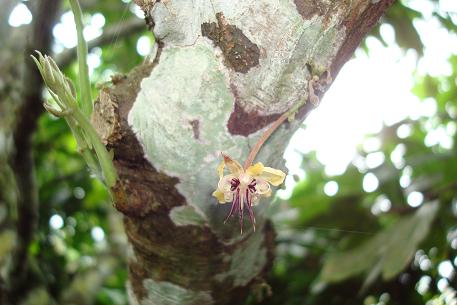 Fig. 11 Cacao cushion 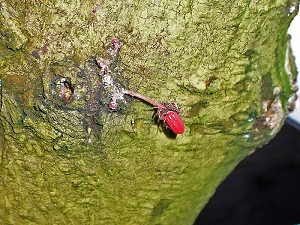 Fig. 18  Fruit forming 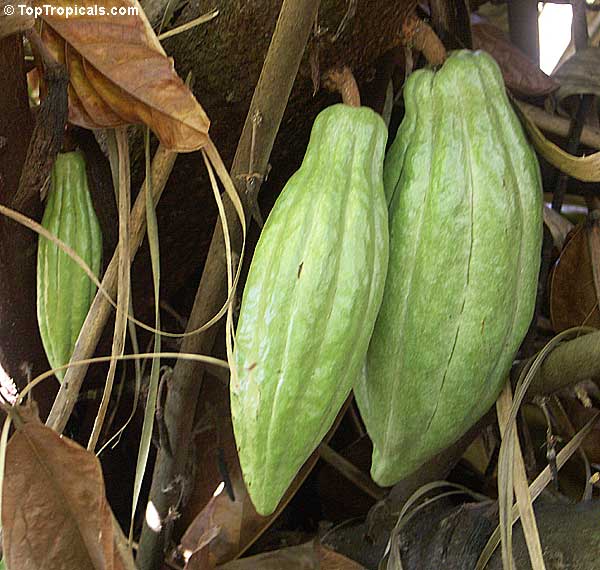 Fig. 19 Immature pods  Fig. 20 Mature pods 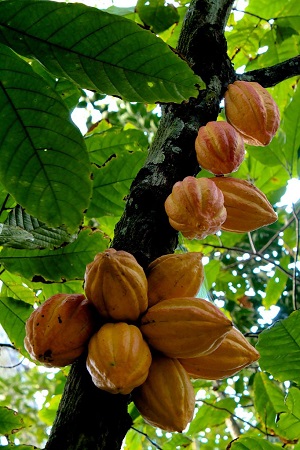 Fig. 21  Fruit growth habit 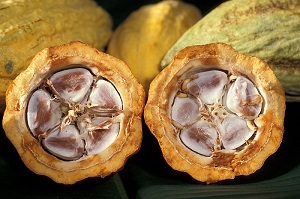 Fig. 22  Cacao beans in a cacao pod showing the outer rind, the seeds, and inner pulp 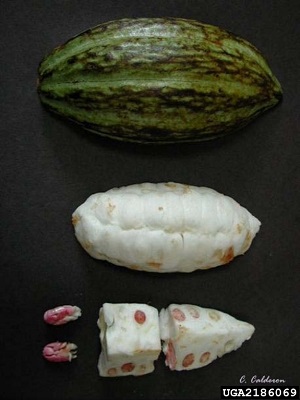 Fig. 23  Cacao disected 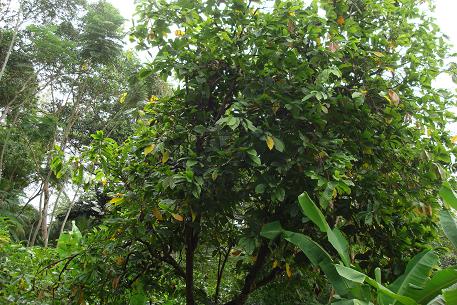 Fig. 28 Cacao tree in natural habitat  Fig. 29  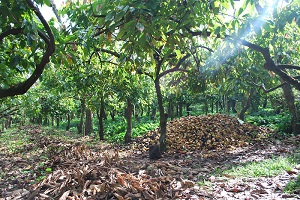 Fig. 31  View of the coconut grove at the La Chonita Hacienda in Tabasco, Mexico 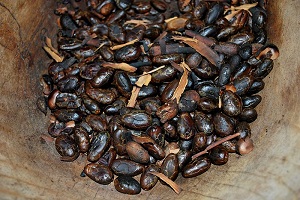 Fig. 32  Toasted cacao beans grown at the La Chonita Hacienda in Tabasco, Mexico 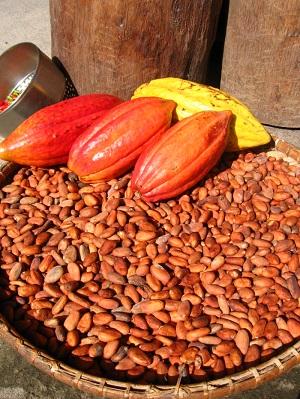 Fig. 33  Inside the pods, that grow up the tree's trunk, are where the cocoa seeds are located 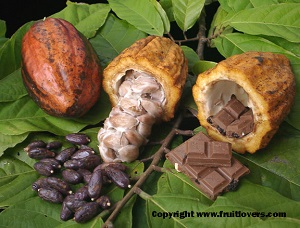 Fig. 34  Cacao fruit, seeds and chocolate 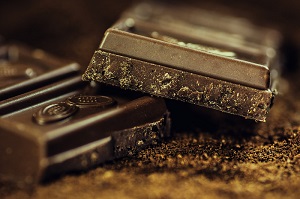 Fig. 35  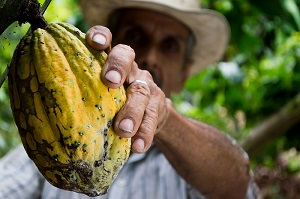 Fig. 56  Cacao worker in Columbia 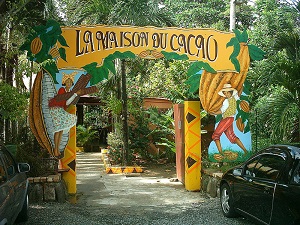 Fig. 57  Entrée de l'écomusée La Maison du Cacao à Pointe-Noire en Guadeloupe (France) 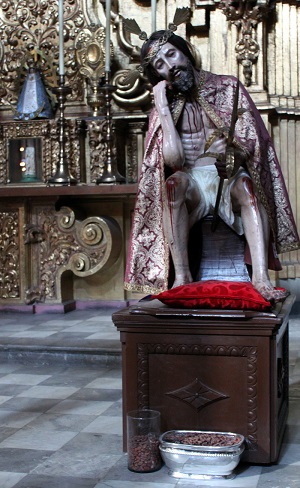 Fig. 58  Lord of the Cacao beans — colonial Mexican sculpture from 16th century, Metropolitan Cathedral of Mexico City  Fig. 59  A replica of the Statue of Liberty at Hershey's Chocolate World in New York New York hotel in Las Vegas 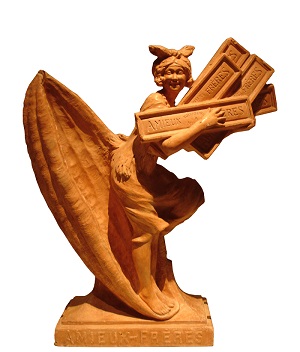 Fig. 60  Statue ventant Amieux Frères, Musée du château des ducs de Bretagne de Nantes |
Scientific
name Theobroma cacao subsp. cacao and T. cacao subsp. sphaerocarpum 1 Common names English: cacao, cocoa; Spanish: árbol del cacao, cacaotero, calabacillo, forastero; French: cacaoyer, cacaotier; German: Kakao, Kakaopflanze; Portuguese: cacau, cacaoeiro; Swedish: kakao 10 Synonyms T. cacao subsp. cacao; T. cacao f. leiocarpum (Bernoulli) Ducke; T. cacao subsp. leiocarpum (Bernoulli) Cuatrec.; T. cacao var. leiocarpum (Bernoulli) Cif.; T. cacao subsp. pentagona (Bernoulli) León; T. cacao subsp. sativa (Aubl.) León; T. cacao subsp. sphaerocarpum (A. Chev.) Cuatrec. 5 Relatives Cola nut (Cola acuminata) Family Sterculiaceae/Malvaceae (mallow family) Origin Central and northern South America 1 USDA hardiness zones Truly tropical areas characterized by year-round temperatures at or above 68 °F 1 Uses Essential ingredient in numerous commercial products, including candy, desserts, and drinks 1 Height 25-30 ft (7.6-9.1 m) 1 Plant habit Evergreen small tree with few branches under tropical environments Trunk/bark/branches Bark smooth, dark brown and somewhat scaly; erect, adventitious shoot 6 Pruning requirement Plant height should be limited to 6-8 ft (1.8-2.4 m) 1 Leaves Lanceolate; bright green; up to 24 in. (61 cm) long by 4 in. (10 cm) wide 1 Flowers Small; procuced in clusters directly on trunk or older branches. Fruit Called a pod; thick peel; 4-13 in. (10–33 cm); cylindrical to round shaped with longitudinal ribs; 20-60 seeds 1 Season Oct.-Jan. USDA Nutrient Content pdf Light requirement Part shade Soil tolerances Rich, organic, well-drained, moist, deep soils 4 pH preference Slightly acid to neutral Drought tolerance Not tolerant Aerosol salt tolerance Unknown Soil salt tolerance Unknown Cold tolerance Damage temp. 50 °F (10 °C) Wind tolerance No wind tolerance Plant spacing 10-15 ft (3.1–4.6 m) 1 Roots Tap root with ramifying branch roots 5 Invasive potential * None reported Diseases/Pest resistance Cocoa tree is susceptible to many diseases and insects Known hazard Theobromine, bitter alkaloid of the cacao plant, is poisonous to dogs Reading Material Cocoa (Chocolate Bean) Growing in the Landscape, University of Florida pdf Theobroma cacao L., Handbook of Energy Crops Processing Cocoa, Archives of the Rare Fruit Council of Australia Theobroma cacao: from Bud to Bean, Tava Australia Making Cacao Growing a Piece of Cake, Fairchild Tropical Botanic Garden Origin Origin of this tropical understory tree in the family of the Sterculiaceae are the Amazon Headwaters from where it moved to Central America. Cocoa cultivation began by Mayan tribes in Central America, ca. 1500 BC. Description There are two distinct types of cocoa, Criollo types (cacao dulce) that developed north of the Panama isthmus, and Forastero (cacao amargo) which originated in the Amazon basin. Criollo types were cultivated by the indigenous people of Central and South America and were the type Europeans were first exposed to. Commercial production commenced in Brazil using the Forastero types, mainly a uniform type called Amelonado. Both types were distributed throughout the Caribbean, where they hybridized in Trinidad, creating a distinct hybrid called Trinitario. Spanish explorers took cocoa to the Philippines, where it spread throughout southeast Asia, India, and Ceylon. Amelonado cocoa was taken to West Africa. 1 Leaves Leaves are found toward the ends of the branches. Leaves are simple with a long petiole, which has a swelling at each end called a pulvinus. The pulvinus allows the leaf to swivel to catch sunlight. Leaves are lanceolate, bright green, and up to 24 inches (61 cm) long by 4 inches (10 cm) wide. Young leaves have a pinkish-red color. They turn green as they mature. As the plant grows new leaves, older ones may drop. 1
Fig. 5. T. cacao (Cacao, cocoa tree), leaves, Kula Ace Hardware and Nursery, Maui, Hawai'i Fig. 6. Flush of new leaves Fig. 7. New growth showing after pruning of branch Flowers Cocoa flowers and fruits on the older branches and trunk (called cauliflorous flowering). One to 5 flowers arise from a special tissue along the leafless parts of the stem, called the cushion (Fig. 11). Flowers may arise from this cushion repeatedly. Flowers are small, with 5 petals and sepals and 10 stamens (Fig. 13). They are hermaphroditic (they have male and female plant parts). 1 The time from flowering (fertilization) to fruit maturity ranges from 5 to 6 months, depending upon temperatures. 1
Fig. 15. Closed and open blossom and fruits on the trunk of T. cacao (ÖBG Bayreuth) Fig. 16. T. cacao inflorescense Fig. 17. Floral diagram showing partial inflorescence Fruit Cocoa plants may set a large number of fruit, which may lead to plant decline. In general, only 1 to 2 pods should be allowed to develop at any one flowering cushion on a limb. In other words, if more than 1 of the flowers from a cushion sets a fruit, leave only 1 or 2 to develop. Removing an excessive number of pods will result in faster development and larger pods of remaining fruit. 1 The fruit is called a pod (technically it is a drupe), and the time from flower pollination to a fully developed pod takes 5 to 7 months or more. The pod has a thick peel (pericarp) and may be 4 to 13 inches (10–33 cm) long. It may be cylindrical to round shaped with longitudinal ribs. The pod may be green or green-white, turning yellow upon ripening, or it may be red and develop some yellow color upon ripening. The pods are very attractive from an ornamental standpoint. Pods contain 20 to 60 seeds. Seeds are covered with a white, pinkish or brownish, subacid mucilage that is sweet. Seeds may be extracted and the mucilage surrounding the seed consumed. The seeds are processed to make chocolate. 1
Fig. 24. Young fruit Fig. 25. Cacao pods in varying levels of ripeness growing on the trunk of a tree (cauliflory) Fig. 26. The fruit of the cacao plant, each nugget is creamy and tastes a bit like white chocolate without the sugar Cacao Varieties Explained, Cocoa and Chocolate, Tava chocolate blog Harvesting Pods should be harvested soon after developing their characteristic yellow or red and yellow peel color. The pods should be clipped off carefully. Pulling them off may damage the cushion and reduce pod production. The pod may be opened with a knife and the mucilaginous seeds removed. 1 In your home garden the cacao tree will take up to four years to begin to bear fruit. 9 Pollination Cocoa is pollinated by crawling and flying insects. Some cocoa types and varieties are self incompatible, requiring cross pollination with a compatible variety. The Amelonado variety is fully self-compatible. Self-incompatibility of cocoa flowers may result in little to no pod production. Therefore either a self-compatible type (variety) should be grown or 2 or more compatible types (varieties), should be grown near each other. Since cocoa is normally pollinated by specific midge species (Forcipomyia spp.) that may not be present in Florida, hand pollination is one way to increase the chance of pod formation. Flowers usually open in the early morning, and hand pollination during the morning hours is best. This may be accomplished by using a small artist's paint brush that is first placed in contact with the anthers of an open flower and then placed in contact with the stigma of another flower. 1 Propagation Is by seed, airlayering, cuttings or grafting. Seeds germinate in 5-10 days, but lose viability quickly if they dry out. Seedlings should be grown under 50% shade. Cacao may be cleft or patch grafted. Propagation may be by cuttings, buddings or graftings, but seeding is cheaper. Seeds germinate at maturity, and are viable only a short time. They may be stored 10–13 weeks if moisture content is kept at 50%. 4 Grafting Cacao, University of Hawai'i at Mānoa pdf Climate Cocoa evolved as an understory shade tree in hot, humid, tropical rainforest areas dominated by cloudiness and with well distributed rainfall and a short dry period. South Florida's warm subtropical environment is very marginal for cocoa growing, and plants may be damaged or killed during prolonged cool or brief freezing temperatures. 1 Optimum temperatures for cocoa growth range from 65 to 90 °F (18–32 °C). Temperatures below 50 °F (10 °C) may damage or kill the plant and temperatures in excess of 90 °F (32 °C) may limit plant growth. Flowering only occurs when temperatures are at or above 68 °F (20 °C). 1 Planting Refer to the University of Florida publication for detailed information on planting. Cocoa plants are adapted to and grow best in hot, humid tropical areas with evenly distributed rainfall. Truly tropical areas are characterized by year-round temperatures at or above 68 °F and no freezing temperatures. 1 Roots Seedling cocoa has a tap root that may extend several feet in deep soils. In addition, secondary, shallow, fibrous roots radiate laterally from the trunk; these roots are the major roots for water and nutrient absorption. 1
 Fig. 30. Characteristic root system of the cocoa tree Pruning Newly planted trees should be allowed to grow to 1 to 2 ft (0.3–0.6 m). If no branching occurs, then the top should be cut back to initiate branching. Three to 4 main branches should be allowed to develop. Remove all others. 1 Plant height should be limited to 6 to 8 ft (1.8–2.4 m) to facilitate care and make protection from winds, excessive light, and cold temperatures easier. Periodically, selected branches should be removed to allow an increase in light and air movement inside the plant canopy. This will enhance pod production and reduce fungal disease problems. Damaged or diseased branches should also be removed regularly. 1 Pruning should be done at the end of the summer to prepare the tree for the following crop. 8 Cocao Cultural Calendar Irrigation Cocoa require access to soil moisture (water) nearly year round and thus benefit from regular watering during dry periods. Drought stress leads to leaf and flower drop and poor fruit production. 1 Pests Numerous insects and diseases are reported to attack cocoa plants, however, since cocoa is rarely grown in south Florida, insect problems may be reduced although not eliminated. Contact your local county extension agent for current control recommendations. 1 Diseases Numerous diseases are reported to attack cocoa plants. Because cocoa is rarely grown in south Florida, however, disease problems may be reduced, although not eliminated. Several Phytophthora species common to Florida are reported to attack cocoa shoots, leaves, roots, and pods. Several pod rotting fungi may be present in Florida. 1 Never propagate new cocoa plants from mother plants showing symptoms of distorted growth. The distorted growth may indicate a viral infection. 1 Food Uses Chocolate is sold in chocolate bars, which come in dark chocolate, milk chocolate and white chocolate varieties. Chocolate is used as an ingredient in a huge variety of candy bars which are coated in chocolate. Chocolate is used as a flavouring product in many desserts. Some non-alcoholic beverages contain chocolate. Some alcoholic liqueurs are flavoured with chocolate. Chocolate is a popular flavour of ice cream and pudding, and chocolate sauce is a commonly added as a topping on ice cream sundaes. 3
Fig. 36. Ganaché de chocolate Fig. 37. Tartufo: chocolate gelato with a core of vanilla gelato, and covered in chocolate and syrup Fig. 38. Marocchino or Mocacchino - a shot of espresso with a sprinkling of cacao and milk foam spooned on top Fig. 39. A cockatil made with brandy, creme de cacao and cream Fig. 40. Chocolate tart with frangipane in the center, frangipane is a filling made from or flavored like almonds Fig. 41. A variant of "Bicerin": a hot drink made with chocolate, espresso, and whipped cream, from Turin Fig. 42. Chocolatería San Ginés, Madrid; this place is open til 7am for those 3am churros (fried-dough pastry snack) cravings Fig. 43. Caracs are Swiss mini tarts with chocolate filling, covered with green icing Fig. 44. Charlotte aux poires et chocolat; on voit clairement le biscuit à la cuillère et la construction du gateau Fig. 45. Ralph had the profiteroles with vanilla ice cream and chocolate sauce Balthazar New York Cocoa, chocolate and the food processors, The Rare Fruit Club WA How Chocolate is manufactured, Chocolate Review Making Chocolate from Scratch, University of Hawai'i at Mānoa pdf Other Products
Fig. 46. Cocoa (chocolate) for drink, as commonly sold in El Salvador Fig. 47. Taza Chocolate's Mexican discs Fig. 48. Cri Cri, tipico cioccolatino pralinato piemontese, Italy Fig. 49. Sarments (chocolate twigs) du Médoc, France Fig. 50. Farina Eau de Cologne Flacon made of chocolate by Stollwerck Fig. 51. Armenian chocolate Fig. 52. A Swedish box of dark chocolates called "Aladdin mörk choklad" (top layer, identical to the bottom layer) Fig. 53. Edmond Briottet Creme de Cacao Brun Liqueur, France Fig. 54. Cacao beer from the Prael Brewery Amsterdam commissioned by Metropolitan Chocolate C.V. Fig. 56. Cocoa powder Medicinal Properties ** In general chocolate and cocoa is considered to be a rich source of antioxidants such as procyanidins and flavanoids, which may impart anti aging properties. Chocolate and cocoa also contain a high level of flavonoids, specifically epicatechin, which may have beneficial cardiovascular effects on health. 2 Other Uses Cocoa butter is used in confections and in manufacture of tobacco, soap, and cosmetics. Cocoa butter has been described as the world's most expensive fat, used rather extensively in the emollient "bullets" used for hemorrhoids. 4 New products from Theobroma cacao: Seed pulp and pod gum, New Crops, Purdue University General It is appropriate to use "cacao" to refer to the plant and its cultivation and "cocoa" to refer to the beans or the product used to make chocolate. 8 The generic name is derived from the Greek for "food of the gods"; from θεός (theos), meaning "god", and βρῶμα (broma), meaning "food". 6 Theobroma cacao is the taxonomic classification for the plant also called the cacao tree and the cocoa tree. 6 Caution, Fruit and Plant Enthusiasts: Cocoa plants are adapted to and grow best in hot, humid tropical areas with evenly distributed rainfall. Truly tropical areas are characterized by year-round temperatures at or above 68°F and no freezing temperatures. However, cocoa plants with their beautiful foliage and striking pods (fruit), can be grown in well protected areas, and they make unique, interesting, challenging, and fun additions to the home landscape. 1 Mayas and Aztec attributed divine origin to cocoa tree (brought by god Quetzacoatl). The precious cocoa beans were used as a currency. The sacred beverage called "chocolatl" was consumed from golden cups. Cocoa is grown in 58 countries and on more than 17 million acres (6.9 million ha) world-wide and is worth in excess of $4 billion to the world's economy annually. 1
Fig. 61. Chocolate melanger mixing raw ingredients. Ghirardelli Square, San Francisco, California USA. Fig. 62. Hershey Conche in the early 1900s made by J.M. Lehmann in Dresden / Paris. This machine is on display as part of the Hershey Story Collection. Fig. 63. Granite roller and Granite base of a conche used by Hershey in the early 1900s. This is on display as part of the Hershey Story Collection. Fig. 64. Chocolatier assembling chocolate eggs, Choco-Laté fair, Brugge, Belgium. Fig. 65. Chocolate Easter egg. Fig. 66. Silver chocolate pot with hinged finial to insert a molinet or swizzle stick. Further Reading The Science of Cacao Fermentation, Cocoa and Chocolate, Tava chocolate blog Chocolate Flavor Chemistry, Chocolate Review Cocoa History, Chocolate Review website Raw Cocoa Beans, Tava Australia World Cocoa Foundation ext. link International Cocoa Organization ext. link Cocoa Botanical Art List of Growers and Vendors |
|||||||||||||||||||||||||||||||||||||||||||||||||||||||||||||||||||||||||||||||
| Bibliography 1 Crane, Jonathan H., et al. "Cocoa (Chocolate Bean) Growing in the Florida Home Landscape." Horticultural Sciences Dept., UF/IFAS Extension, HS1057, Pub. Nov. 2005, Revised Nov. 2016, Reviewed Dec. 2019, EDIS, edis.ifas.ufl.edu/hs307. Accessed 7 June 2017, 1 June 2020. 2 "Cocoa bean." Wikipedia, wikipedia.org. Accessed 4 Oct. 2014. 3 "Chocolate." Wikipedia, wikipedia.org. Accessed 5 Oct. 2014. 4 Duke, James A. "Theobroma cacao L." Handbook of Energy Crops, unpublished, 1983, hort.purdue.edu. Accessed 5 Oct. 2014. 5 "Theobroma cacao synonyms." The Plant List (2010), Version 1, theplantlist.org. Accessed 7 June 2017. 6 "Theobroma cacao." Wikipedia, wikipedia.org. Accessed 12 June 2017. 7 Figueira, Antonio, et al. 'New Products from Theobroma cacao: Seed Pulp and Pod Gum." New crops™, Edited by J. Janick and J. E. Simon, hort.purdue.edu./newcrop/proceedings1993/V2-475.html. Accessed 12 June 2017. 8 Hebbar, Prakash, et al. "Farm and Forestry Production and Marketing Profile for Cacao, Theobroma cacao." Specialty Crops for Pacific Island Agroforestry, Permanent Agriculture Resouces (PAR), Edited by Elevitch, C. R., Agroforestry, agroforestry.net/scps. Accessed 12 June 2017. 9 Ledesma, Noris. "Making Cacao Growing a Piece of Cake." Fairchild Tropical Botanic Garden, Miami Herald, 6 Jan. 2013, fairchildgarden.org. Accessed 15 June 2017. 10 "Taxon: Theobroma cacao L." USDA, Agricultural Research Service, U.S. National Plant Germplasm System, GRIN-Global, npgsweb.ars-grin.gov/gringlobal/taxonomydetail.aspx?id=101885. Accessed 9 Dec. 2020. Photographs Fig. 1 Jacob, Manna. "Eine Kakaofrucht (Theobroma cacao) im Pflanzenhaus des Luisenparks in Mannheim." Wikimedia Commons, 2005, (CC BY 2.5), commons.wikimedia.org. Accessed 14 June 2017. Fig. 2,3,4,6,11,28 Kwan. "Theobroma cacao (cocoa tree)." The Plant Observatory, 2008, natureloveyou.sg. Accessed 3 Oct. 2014. Fig. 5 Starr, Forest and Kim. "Theobroma cacao (Cacao, cocoa tree). Leaves. Kula Ace Hardware and Nursery, Maui, Hawaii." Starr Environmental, 2007, (CC BY 4.0), starrenvironmental.com. Accessed 14 June 2017. Fig. 7,29 Sample, Jane. 'Theobroma cacao." Flickr, 2015, flickr.com. Accessed 17 June 2017. Fig. 8,14,18,24 Zell, H. "Theobroma cacao, Malvaceae, Cocoa Tree, Cacao Tree, flower. Botanical Garden KIT, Karlsruhe, Germany." Wikimedia Commons, 2009, (CC BY-SA 3.0 DE), commons.wikimedia.org. Accessed 16 June 2017. Fig. 9 Zell, H., and Domste. "Theobroma cacao flower with Spanish labels." Wikimedia Commons, 2012, (CC BY-SA 3.0), commons.wikimedia.org. Accessed 14 June 2017. Fig. 10 Robitaille, Liette. "Cocoa Series at Fairchild Tropical Botanical Garden." 2014, www.growables.org. Fig. 12 Domste. "Macrophotography of Theobroma cacao flower (closed) (University of Vienna)." Wikipedia, 2012, (CC BY-SA 3.0), wikipedia.org. Accessed 14 June 2017. Fig. 13 Domste. "Macrophotography of T. cacao flower (opened) (University of Vienna)." Wikipedia, 2012. (CC BY-SA 3.0), wikipedia.org. Accessed 14 June 2017. Fig. 15 Chianti. "Closed and open blossom and fruits on the trunk of Theobroma cacao (ÖBG Bayreuth)." Wikipedia, 2016, (CC BY 3.0), wikipedia.org. Accessed 16 June 2017. Fig. 16 Stüber, Kurt. "Theobroma cacao. Family: Sterculiaceae." Wikipedia, 2003, (CC BY-SA 3.0), wikipedia.org. Accessed 16 June 2017. Fig. 17 Nefronus. "Floral diagram showing partial inflorescence." Wikipedia, 2014, (CC BY-SA 4.0), wikipedia.org. Accessed 14 June 2017. Fig. 19,27 "Theobroma cacao (Cacao, cocoa tree)." Top Tropicals, toptropicals. Accessed 3 Oct. 2014. Fig. 21 Luisovalles. "Cacao (Theobroma cacao)." Wikipedia, 2010, (CC BY 3.0), wikipedia.org. Accessed 16 June 2017. Fig. 22 Weller, Keith. "Cross-section of a healthy cacao pod." USDA Agricultural Research Service, USDA, ARS, Public domain, ars.usda.gov. Accessed 4 Oct. 2014. Fig. 23 Calderon, Cesar. "Cacao, Theobroma cacao." 2006, USDA APHIS PPQ, Bugwood.org, (CC BY-SA 3.0), bugwood.org. Accessed 6 Oct. 2014. Fig. 25 Medicaster. "Cocoa pods in varying levels of ripeness growing on the trunk of a tree (cauliflory)." 2006, Public domain, wikipedia.org. Accessed 4 Oct. 2014. Fig. 26 Sims Parr, Cyndy. "The fruit of the cacao plant. Each nugget is creamy and tastes a bit like white chocolate without the sugar. I'm thinking that when each piece is dried it is what they call a cocoa bean." Flickr, 13 Aug. 2012, (CC BY-SA 2.0), Image Cropped, www.flickr.com/photos/cyanocorax/7841865932/. Accessed 9 Dec. 2020. Fig. 30 "Caracteristic of the root system of the cocoa tree." The chocolate-plant (Theobroma cacao) and its products, 1891, Internet Archive, archive.org/details/plantthchocolate00waltrich. Accessed 16 June 2017. Fig. 31 Garcia, Alejandro Linares. "View of the coconut grove at the La Chonita Hacienda in Tabasco, Mexico." Wikimedia Commons, 2013, (CC BY-SA 3.0), commons.wikimedia.org. Accessed 14 June 2017. Fig. 32 Garcia, Alejandro Linares. "Toasted cacao beans grown at the La Chonita Hacienda in Tabasco, Mexico." Wikimedia Commons, 2011, (CC BY 3.0), wikipedia.org. Accessed 16 June 2017. Fig. 33 Lolay. "Inside the pods, that grow up the tree's trunk, are where the cocoa seeds are located." Wikimedia Commons, 2008, (CC BY 2.0), commons.wikimedia.org. Accessed 14 June 2017. Fig. 34 Jaitt, Oscar. "Acocoa or Chocolate tree (Theobroma cacao)." FruitLovers, fruitlovers.com. Accessed 3 Oct. 2014. Fig. 35,55,56 "Cacao." Pixabay, pixabay.com. Accessed 15 June 2017. Fig. 36 Contreras, Luisa. "Ganaché de chocolate." Wikimedia Commons, 2013, (CC BY 2.0), commons.wikimedia.org. Accessed 16 June 2017. Fig. 37 Fox, Anna. "Tartufo. Chocolate gelato with a core of vanilla gelato, and covered in chocolate and syrup. Our delicious dessert at Ai Pescatori in Burano." Wikimedia Commons, 2008, (CC BY 2.0), commons.wikimedia.org. Accessed 16 June 2017. Fig. 38 Chheda, Dhinal. "Marocchino or Mocacchino." Wikimedia Commons, 2016, (CC BY 2.0), commons.wikimedia.org. Accessed 16 June 2017. Fig. 39 Lam, Jason. "A cockail made with brandy, creme de cacao and cream." Wikimedia Commons, 2008, (CC BY 2.0), commons.wikimedia.org. Accessed 16 June 2017. Fig. 40 fugzu. "Chocolate tart with frangipane in the center. Frangipane is a filling made from or flavored like almonds." Wikimedia Commons, 2009, (CC BY 2.0), commons.wikimedia.org. Accessed 16 June 2017. Fig. 41 Takeaway. "A variant of "Bicerin": a hot drink made with chocolate, espresso, and whipped cream; from Turin." Wikimedia Commons, 2016, (CC BY-SA 4.0), commons.wikimedia.org. Accessed 16 June 2017. Fig. 42 Lucas, Tim. "Chocolatería San Ginés, Madrid. This place is open til 7am for those 3am churros cravings." Wikimedia Commons, 2012, (CC BY 2.0), commons.wikimedia.org. Accessed 16 June 2017. Fig. 43 Rieser, Micha L. "Caracs are Swiss mini tarts with chocolate filling, covered with green icing." Wikimedia Commons, 2007, (CC BY 2.0), commons.wikimedia.org. Accessed 16 June 2017. Fig. 44 Popo le Chien. "Charlotte aux poires et chocolat. On voit clairement le biscuit à la cuillère et la construction du gateau." Wikimedia Commons, 2016, (CC BY-SA 3.0), commons.wikimedia.org. Accessed 16 June 2017. Fig. 45 Daily, Ralph. "Ralph had the profiteroles with vanilla ice cream and chocolate sauce Balthazar New York." Wikimedia Commons, 2014, (CC BY 2.0), commons.wikimedia.org. Accessed 16 June 2017. Fig. 46 Ll1324. "Cocoa (chocolate) for drink, as commonly sold in El Salvador." Wikimedia Commons, 2012, (CC BY 2.0), commons.wikimedia.org. Accessed 16 June 2017. Fig. 47 guerrerov, Andrea. "Taza Chocolate's Mexican Discs." Wikimedia Commons, 2015, (CC BY-SA 4.0), commons.wikimedia.org. Accessed 16 June 2017. Fig. 48 Rollopack. "Cri Cri, tipico cioccolatino pralinato piemontese." Wikimedia Commons, 2015, (CC BY-SA 4.0), commons.wikimedia.org. Accessed 16 June 2017. Fig. 49 JPS68. "Sarments du Médoc." Wikimedia Commons, 2015, (CC BY-SA 4.0), commons.wikimedia.org. Accessed 16 June 2017. Fig. 50 Farina, Johann Maria. "Farina Eau de Cologne Flacon made of chocolate by Stollwerck." Wikimedia Commons, 1933, (CC BY-SA 3.0 DE), commons.wikimedia.org. Accessed 16 June 2017. Fig. 51 Narek75. 'Armenian Chocolate." Wikimedia Commons, 2014, (CC BY-SA 4.0), commons.wikimedia.org. Accessed 16 June 2017. Fig. 52 Lindqvist, Hans . "A Swedish box of dark chocolates called "Aladdin mörk choklad" (top layer, identical to the bottom layer). 2014, (CC BY-SA 3.0 DE), commons.wikimedia.org. Accessed 16 June 2017. Fig. 53 Lockyer, Dominic. "Edmond Briottet Creme de Cacao Brun Liqueur. 2014, (CC BY 2.0), commons.wikimedia.org. Accessed 16 June 2017. Fig. 54 Denkhenk. "Cacao Beer from the Prael Brewery Amsterdam commissioned by Metropolitan Chocolate C.V." Wikimedia Commons, 2012, (CC BY-SA 3.0 DE), commons.wikimedia.org. Accessed 16 June 2017. Fig. 57 Tux-Man. "Entrée de l'écomusée La Maison du Cacao à Pointe-Noire en Guadeloupe (France)." Wikimedia Commons, 2007, (CC BY-SA 3.0), commons.wikimedia.org. Accessed 16 June 2017. Fig. 58 Anagoria. "Lord of the Cacao beans — colonial Mexican sculpture from 16th century. In the Metropolitan Cathedral of Mexico City." Wikimedia Commons, 2013, (CC BY-SA 3.0 DE), commons.wikimedia.org. Accessed 16 June 2017. Fig. 59 Supercarwaar. "A replica of the Statue of Liberty at Hershey's Chocolate World in New York. Hotel in Las Vegas." Wikimedia Commons, 2015, (CC BY-SA 4.0), commons.wikimedia.org. Accessed 16 June 2017. Fig. 60 Pinpin. "Statue ventant Amieux Frères - photo prise au Musée du château des ducs de Bretagne de Nantes." Wikimedia Commons, 2007, (CC BY-SA 4.0), commons.wikimedia.org. Accessed 16 June 2017. Fig. 61 Acharya, Sanjay. "Chocolate melanger mixing raw ingredients. Ghirardelli Square, San Francisco, California USA." Wikimedia Commons, 2008, (CC BY-SA 3.0), wikipedia.org. Accessed 16 June 2017. Fig. 62 Z22. "Hershey Conche in the early 1900s made by J.M. Lehmann in Dresden, Paris. This machine is on display as part of the Hershey Story Collection." Wikimedia Commons, 2014, (CC BY-SA 3.0 DE), commons.wikimedia.org. Accessed 16 June 2017. Fig. 63 Z22. "Granite roller and Granite base of a conche used by Hershey in the early 1900s. This is on display as part of the Hershey Story Collection." Wikimedia Commons, 2014, (CC BY-SA 3.0 DE), commons.wikimedia.org. Accessed 16 June 2017. Fig. 64 Oriel. "Chocolatier assembling chocolate eggs, Choco-Laté fair, Brugge, Belgium." Wikimedia Commons, 2007, Public Domain, commons.wikimedia.org. Accessed 16 June 2017. Fig. 65 Myrabella. "Chocolate Easter egg." Wikimedia Commons, 2011, (CC BY-SA 4.0), commons.wikimedia.org. Accessed 16 June 2017. Fig. 66 McGlinchey, Valerie. "Silver chocolate pot with hinged finial to insert a molinet or swizzle stick, London 1714–15 (Victoria and Albert Museum)." Wikipedia, 2010, (CC BY-SA 2.0 UK), wikipedia.org. Accessed 16 June 2017. * UF/IFAS Assessment of Non-native Plants in Florida's Natural Areas ** Information provided is not intended to be used as a guide for treatment of medical conditions. Published Feb. 2014 LR. Last update 9 Dec. 2020 LR |
||||||||||||||||||||||||||||||||||||||||||||||||||||||||||||||||||||||||||||||||
